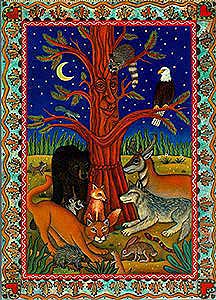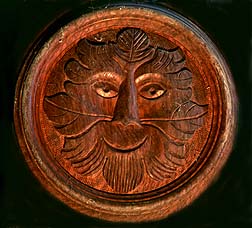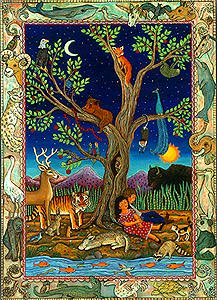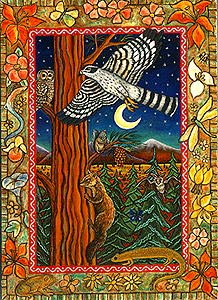IntroductionThe word 'Shaman,' is actually a Tungus (Siberian) word for a spiritual practice that is as old as mankind, and is still practiced by indigenous people, as well as modern practitioners worldwide. Shamanism is not rooted in any organized religious tradition, but is instead a system of controlled visionary journeys into alternate realities (and back,) in order to contact spirit guides and gain their assistance in divination and healing.
The Celtic Shaman's UniverseThe Celtic Shaman's cosmos, like that of other Shamanic universal views, consists of three 'worlds;' the Lower world, the Upper world, and the Middle world (where we live in ordinary reality.) What differentiates the Celtic Shaman's universal view from that of other Shamanic traditions, is that these worlds are all connected by the great tree of life. Rooted in the Lower realm, its trunk extends upwards, through the middle world and into the Upper world, where its branches hold the stars, the sun and the moon.
Thus all three worlds are linked by the great tree, and yet the tree itself and all of the universe are believed contained within the shell of a single hazelnut, lying next to the Well of Segais (the source of all wisdom.) ShapeshiftingShapeshifting is an integral part of the Celtic Shamanic experience. The great Amergin had to commune and fuse his consciousness with the totality of Ireland in order to help the Milesians to conquer it.
The ability to be simultaneously a part of many realities and existences is at the heart of the shamanic experience. The Celtic shaman deliberately seeks to take on the shape of another animal or being in order to call upon the power within the entity for healing or instruction. The ability of the shaman to send his or her own consciousness into the consciousness of another being and then return to one's own self is integral to the shaman's journey. The Welsh bard Taliesin, often said to be the father of Celtic shamanism, also alluded to shapeshifting when he claimed:
Taliesin was also known to have transformed himself into many other forms and guises in his attempt to escape the Goddess Ceridwen after imbibing of the brew of inspiration and wisdom. The Totem BeastsIn shamanic traditions, all people are guarded and watched over by a totem beast, which joins them at the time of their birth. In addition to this totem animal, which can remain with a person throughout their life, the shamanic practitioner acquires additional power animals at different times. These animal spirits serve as guides and spirit helpers. They may come of their own bidding, or may be called specifically because of their innate skills. In some cases the shaman draws upon the strength, the speed or the intuition of a particular animal, or the sharpness of the animals senses. In other situations the animal may tell the shaman things which the shaman cannot see for his or herself.
For Additional InformationFor more information about Celtic Shamanism, the following references are invaluable:
|
|||||||||||||
Copyright © 1998 The Sacred Fire. All rights reserved. |



